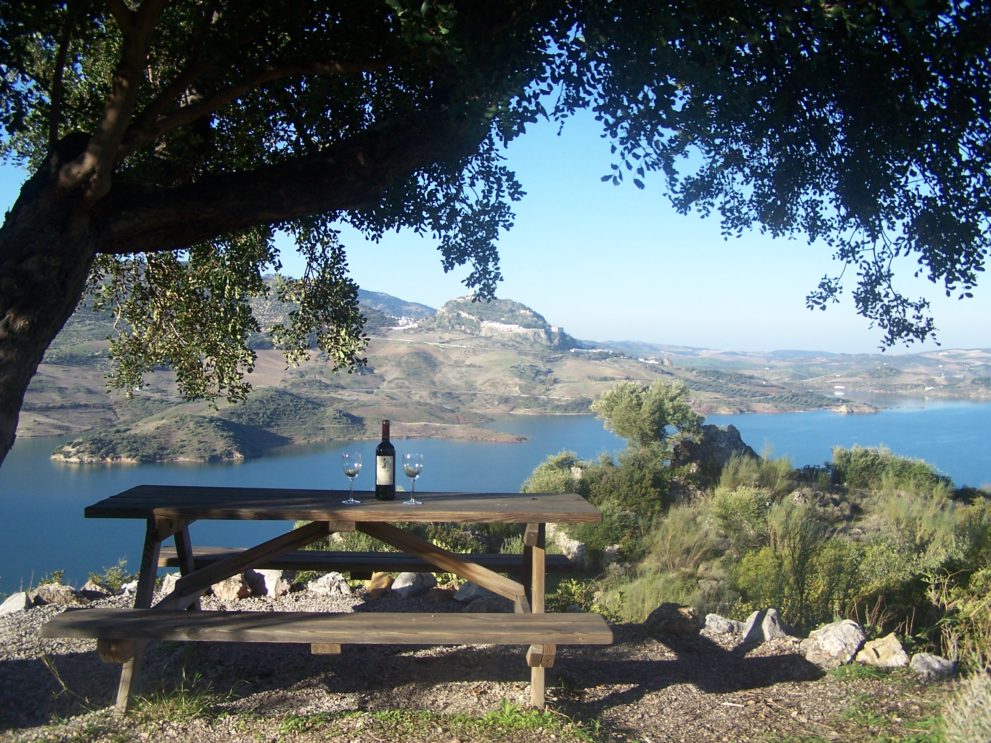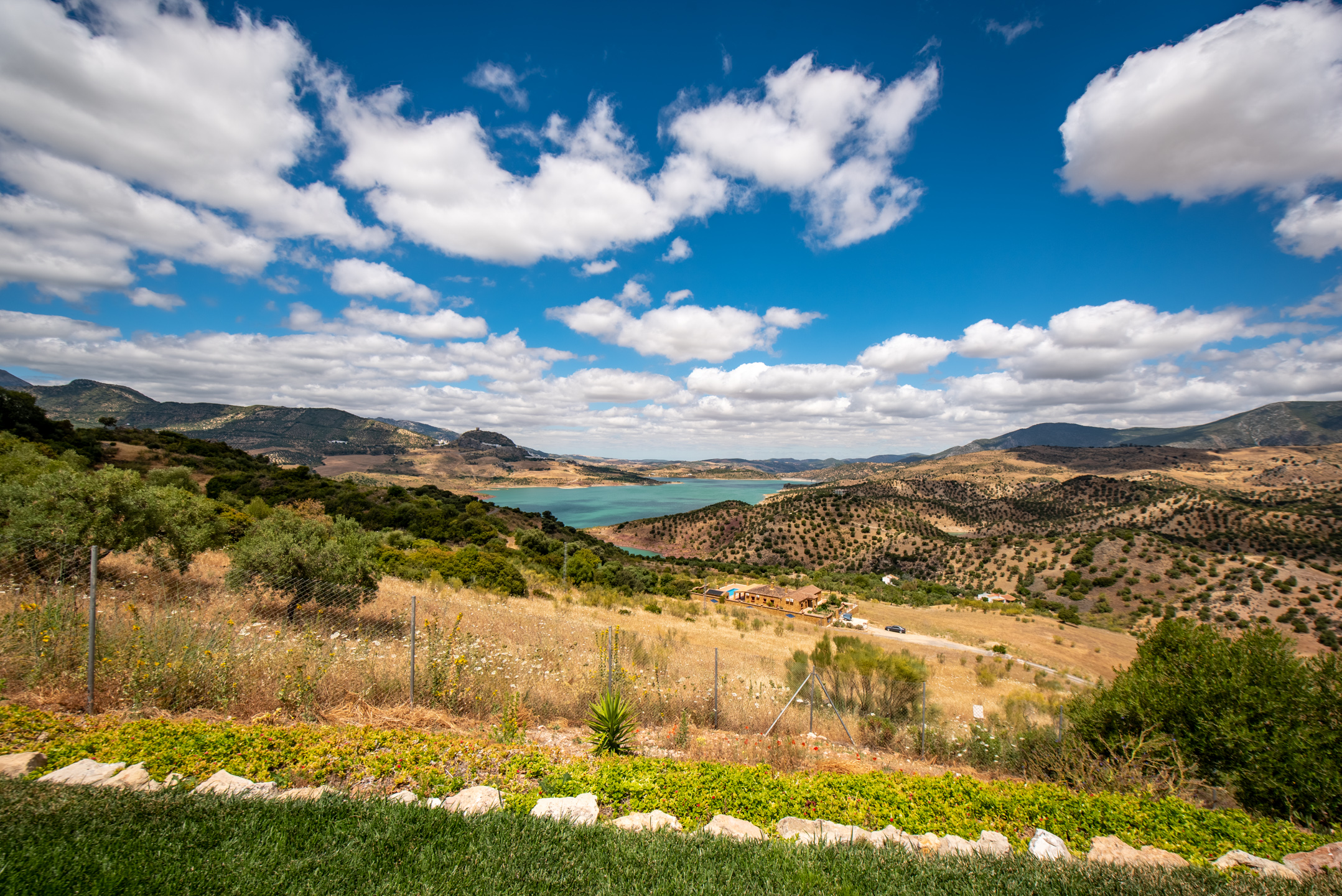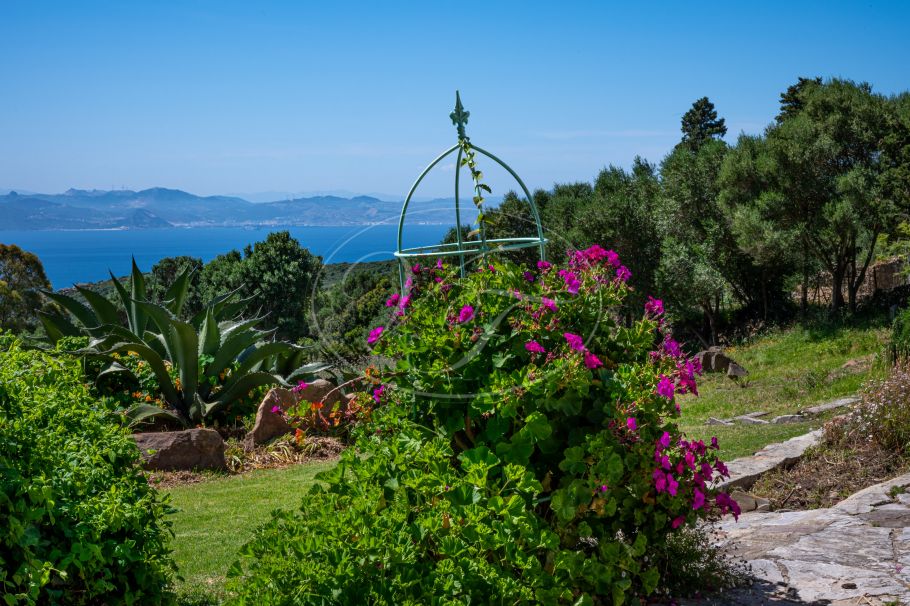A paradise on a hill is what you will find at El Gastor. A chance to enjoy the wonders of a beautiful lake, the incredible hiking trips and the relaxing lifestyle of Andalusians with home cooked lunches and siestas. A perfect combination of the authentic Andalusian lifestyle and adventurous activities with holiday retreats. This white Andalusian mountain village in Grazalema Park attracts people from all over the world. El Gastor welcomes them into the Andalusian lifestyle.
Living in El Gastor
El Gastor is a white Andalusian mountain village, bordering the Zahara lake. The village oozes charm. Many narrow alleys lead you to the village square where the villagers gather for a chat, a coffee or a beer. The typical picture of the old lady dressed in black, sitting on her doorstep and the old men watching the village comes alive here. Living here provides you with a large variety of activities. You can choose to join in village life, or to enjoy the spectacular natural surroundings with endless hikes, horse riding trails, biking trails and of course swims in the lake. El Gastor is located both next to an incredible natural park, the Grazalema park, and right above a lake. If you prefer a swim at the beach, that won’t be a problem either! Both the Mediterranean Sea (in Malaga) and the Atlantic Ocean (Cadiz) are around 1h 30mins away. The drive towards the beaches will also give you an incredible representation of the Andalusian landscapes. Furthermore, Ronda is at less than a 40-minute drive. Here you can taste the delicious wines and enjoy a day out in a famous Andalusian village.
Even though El Gastor is small, the closest airport is at only one hour away, this is the airport of Jerez de la Frontera. The airports of Malaga and Seville are at around 1h 30mins drive away.
Typical Andalusian gastronomy
Since this small village provides so much of Andalusia, the gastronomy is also incredible. You can find the grandmothers in kitchens still cooking the dishes their mothers taught them. A typical dish is ‘Guisote de espárragos’ which is a stew with fresh asparagus from their land. Another typical sweet dish is the ‘rosco blanco’, which is fried dough, shaped in the form of a doughnut and topped with sugar. Many of the ingredients for the typical plates come from the fields and mountains surrounding the village. In spring, villagers even scroll the mountains to search for wild asparagus. The gastronomy comes together in a traditional restaurant in the town called ‘La Posada de Abuela’ literally translated to Grandma’s Inn. You will taste the best home cooked Spanish meals, made, of course, by the best Andalusian recipes.

Adventurous activities
El Gastor offers a wide variety of activities. Firstly, during the summer there are two major events that stand out. One of them is the ‘Corpus Christi’, literally translated to ‘Body of Christ’. This event consists of a religious procession and the entire village decorates their house and the streets beautifully. The children that have done their first communion that year are also part of the procession. The event normally takes place in June, sixty days after Easter. The other celebration is the El Gastor feria, normally celebrated during the first week of August. The village comes to life once again for roughly four days with activities filling the area day and night. It is spectacular how entire families, from babies to grandparents, come together for a few days to celebrate their party.
Secondly, as previously mentioned, there are beautiful hiking, biking and horses riding trails nearby El Gastor. The environment here is a paradise for outdoor sports. The Grazalema mountains with its beautiful rock formations and lake offer endless possibilities. Activities that you can do range from canyoning, climbing, kayaking, horse riding and routes in a 4×4 car.
The mountain ranges around El Gastor represent history as well. Prehistoric civilizations have habituated this area of which proof can be found in the cave, ‘Cueva de la Pileta’. In Roman times the rolling hills were covered in vines. The vines were affected by disease around 185o and nowadays landowners are planting new vineyards to create fabulous boutique wines.
Danielle Ernstsen | 12th May 2023



